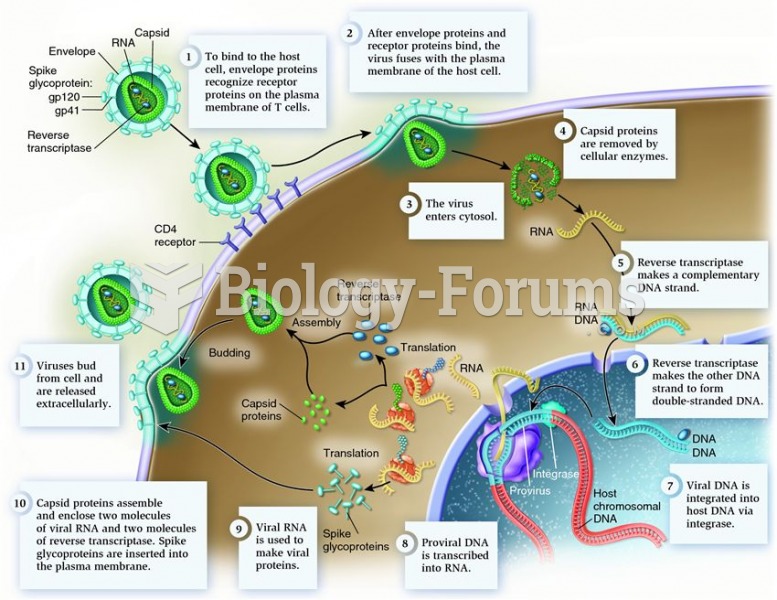Answer to Question 1
Ans:
C
Feedback:
Encephalitis represents a generalized infection of the parenchyma of the brain or spinal cord. A virus, such as West Nile virus, usually causes encephalitis although it may be caused by bacteria, fungi, and other organisms. Encephalitis is characterized by fever, headache, and nuchal rigidity. However, more often, people also experience neurologic disturbances, such as lethargy, disorientation, seizures, focal paralysis, delirium, and coma. Rocky Mountain spotted fever (answer choice A) is a tick-borne disease caused by the bacterium Rickettsia rickettsii and usually begins with a sudden onset of fever and headache. A rash may occur 2 to 5 days after fever onset. Lyme disease (answer choice B) is also a tick-borne disease. Typical symptoms include fever, headache, fatigue, and a characteristic skin rash called erythema migrans. As the disease progresses, the patient develops bouts of severe joint pain and swelling of the joint. Neurological problems may occur for weeks, months, or even years after the infection and may include inflammation of the membranes surrounding the brain (meningitis). Spinal infections (answer choice D) can be thought of as a spectrum of diseases comprising spondylitis, discitis, spondylodiscitis, pyogenic facet arthropathy, and meningitis.
Answer to Question 2
Ans:
A
Feedback:
Coordination and integration of peripheral sensory stimuli occur in the thalamus, along with some crude interpretation of highly emotion-laden auditory experiences that not only occur but also can be remembered. For example, a person can recover from a deep coma in which cerebral cortex activity is minimal and remember some of what was said at the bedside. Inferior to the thalamus, and representing the ventral horn portion of the diencephalon, is the hypothalamus; it is the area of master-level integration of homeostatic control of the body's internal environment. The corpus callosum is a massive commissure, or bridge, of myelinated axons that connects the cerebral cortex of the two sides of the brain. The basal ganglia lie on either side of the internal capsule, just lateral to the thalamus; they supply axial and proximal unlearned and learned postures and movements, which enhance and add gracefulness to UMN-controlled manipulative movements.






